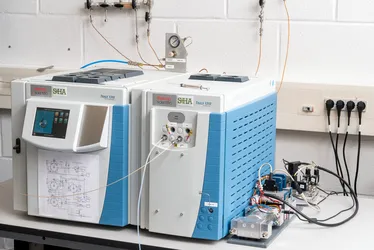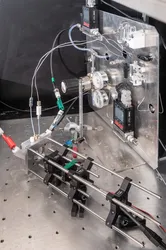CO2 Reduction Reaction
Converting CO2 into value-added organic chemicals or fuels is a most feasible solution to reduce the greenhouse effect, solve the energy crisis, and achieve an efficient global circular carbon economy. Excessively high reaction barriers, complex reaction mechanisms, and poor product selectivity are still the main adjustments currently restricting the development of CO2 reduction reactions.
In our group, we investigate the fundamental mechanism of selectivity changes of CO2 reduction products under different catalytic conditions. The distribution of reaction products can be analyzed, also in-situ, with our established techniques of GC (Gas Chromatography), HPLC (High Performance Liquid Chromatography), and DEMS (Differential Electrochemical Mass Spectrometry). Additionally, our pioneering research-method Differential Cyclic Plasmo-voltammetry (dCPV) is used to observe the changes in catalyst surface conformation and chemical state in-situ.

